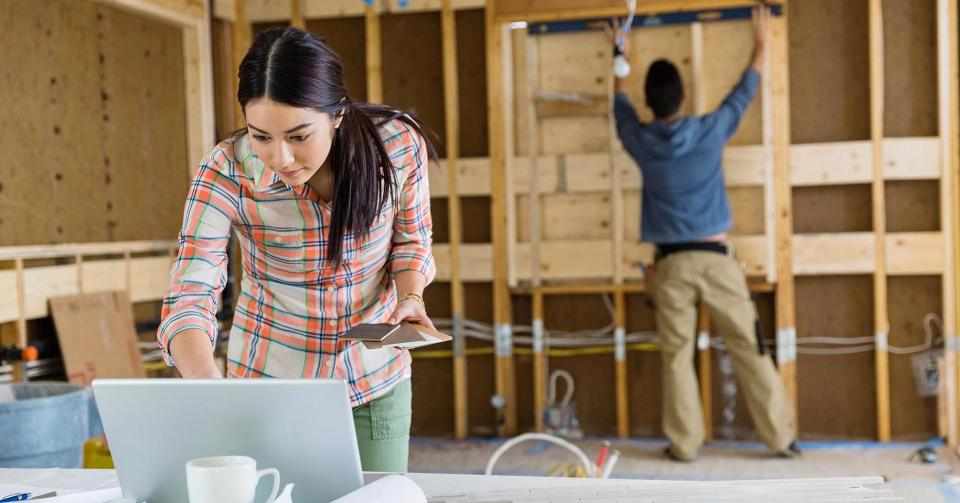
Renovating your home can be an exciting adventure, but it can also feel overwhelming. Have you ever dreamed of transforming your living space into something uniquely yours?
Whether you’re updating a single room or undertaking a complete overhaul, DIY home renovation allows you to customize your home to fit your vision and budget. But where do you start?
How do you ensure the renovation goes smoothly without costly mistakes or delays? Planning and executing a successful DIY home renovation project requires careful thought, preparation, and hard work.
Let’s dive into how you can take on this rewarding challenge:
1. Set Clear Goals And Budget
The first step in any DIY renovation project is clearly defining your goals. What is the purpose of your renovation? Do you want to increase your home's value, update outdated features, or create a more functional space?
Setting a clear goal will guide your decisions throughout the process. For example, using a versatile tool like the IdeaPad 5 2 In 1 16 Inch AMD Laptop can help you stay organized and productive as you plan and execute your renovation.

Define the Scope of the Project
Before starting, decide which areas of your home need renovation. Are you looking to renovate just one room, or do you want to tackle the entire house? Identifying the scope of the project will help you stay focused and prevent you from feeling overwhelmed.
Create a Realistic Budget
Once you've defined the scope, you’ll need to set a budget. Renovations often come with hidden costs, so be sure to add a contingency fund of around 10-15% of your total budget. A budget will keep your project on track and prevent you from overspending on unnecessary items.
Setting and sticking to a budget is key during a large renovation process. It is best practice to set aside a contingency fund for unplanned repairs and unexpected costs and expect to use it.
2. Do Your Research
It’s tempting to dive in and start tearing down walls or choosing paint colors, but taking the time to research is crucial for success.
Do you have the right tools for the job?
Some renovations require specialized tools, and it’s important to understand how they work.
Research what materials are best suited for your project—whether it’s flooring, cabinetry, or paint. Knowing your materials ensures better outcomes and longevity.
Don’t skip this step! Certain renovations require permits, and failing to secure them can lead to costly fines.
Investigate local building codes and zoning regulations to ensure your renovation is up to standard.
3. Create A Detailed Plan
A well-thought-out plan will save you from costly mistakes and ensure your project stays on schedule.
Create a Timeline
A timeline helps keep you organized and ensures you’re realistic about how much time each task will take. Break the project down into phases, and set target dates for each.
Example Timeline for Kitchen Renovation:
Demolition (1 week)
Plumbing & Electrical (2 weeks)
Install Cabinets & Countertops (3 weeks)
Flooring & Painting (1 week)
Final Touches & Cleaning (1 week)
Anticipate Challenges
Every renovation project comes with its share of challenges. Whether it’s an unexpected plumbing issue or a delayed delivery, it’s important to stay flexible.
4. Gather Your Materials And Tools
Before beginning the renovation, gather all the necessary materials and tools.
Tools:
Hammer
Power drill
Level
Measuring tape
Saw
Screwdrivers
Materials:
Paint
Flooring
Lumber
Tiles
Plumbing parts
Having everything on hand before you start helps avoid interruptions during the process.
5. Break The Project Into Manageable Tasks
One of the biggest mistakes DIY renovators make is attempting to do everything at once. Breaking the project down into smaller, more manageable tasks will make it easier to track progress and stay motivated.

Task Breakdown for a Living Room Renovation:
Remove old furniture and flooring
Repair drywall and patch holes
Paint the walls and ceiling
Install new flooring or carpet
Assemble and arrange furniture
By segmenting tasks, you can focus on completing one thing at a time without feeling overwhelmed.
6. Demolition And Preparation
Now that you’ve set up your plan to work on the IdeaPad 16 Inch 2-in-1 Laptop, it's time to prepare the space. Whether it’s knocking down a wall, removing old flooring, or stripping paint, make sure to take safety precautions.
Wear Safety Gear: Always wear gloves, goggles, and a dust mask during demolition to protect yourself from debris and hazardous materials.
Prepare the Area: Cover any furniture or remaining surfaces that you don’t want to damage during the demolition.
Make Sure to Have Proper Disposal Plans
Demolition often generates a lot of waste. Make sure you have a plan for disposing of debris, such as renting a dumpster or contacting a local waste disposal company.
Conclusion
DIY home renovations can be both rewarding and challenging. By setting clear goals, doing thorough research, and staying organized, you can ensure that your project runs smoothly and meets your expectations. Just like when working on your renovation, having the right tools is essential for success.
For instance, the IdeaPad 5 2 In 1 Laptop could be a great asset in planning and tracking your project, allowing you to access design tools, manage schedules, and store important documents on the go. Remember, patience is key, and don’t be afraid to ask for help when needed.
So, are you ready to transform your home into the space of your dreams? It’s time to roll up your sleeves and get started!








Write a comment ...